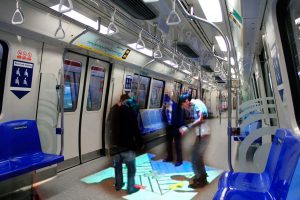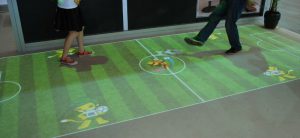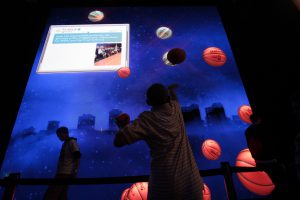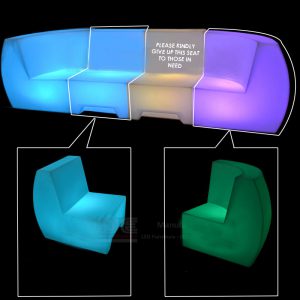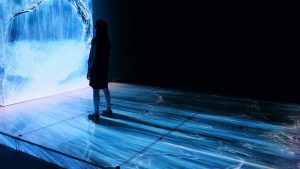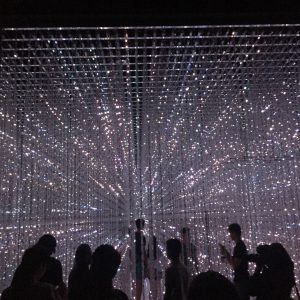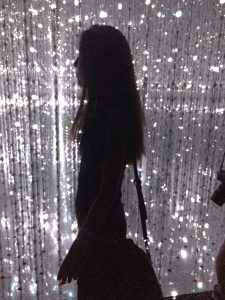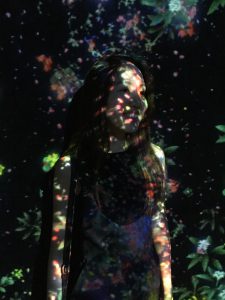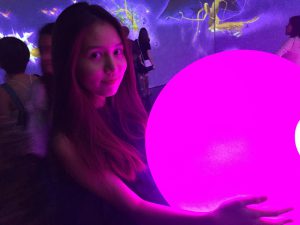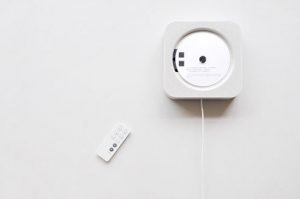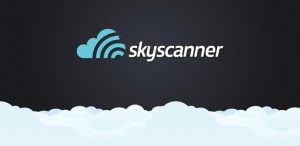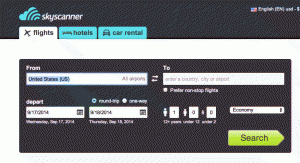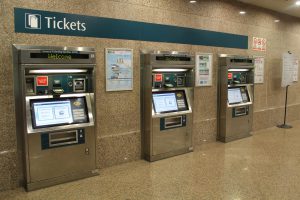Idea 1
Problem
- The lack of social interaction on public transport.
- Passengers onboard are unwilling to move in.
Proposed Solution/ Idea
Through the use of technology, social interactions on public transport could be created by connecting people. This can be done by replacing the walls of buses/trains with interactive wall or floors. These walls not only serve as a platform to connect people, it also acts as a “reminder” to encourage passengers to move into the carriage so as to allow other passengers to be able to board on.
The execution of the interactive walls/floors would be dependent on the spaces available on the carriage e.g. on the bus, interactive walls could be incorporated while on the train, interactive floors would be a better option.
The interactive wall/floor would display games that allow people to “touch and play”. Passengers will get to play the game with other passengers onboard as the games will be in multi-player mode to encourage more social interactions. This is a good opportunity for passengers to interact with one another.
Multi-player mode creates opportunities for social interactions. It is also a good way to kill time during travelling time onboard.
Various games will be displayed at different timings.
Interactive Wall
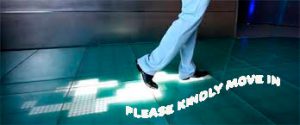 Serves as a platform to remind passengers to move in
Serves as a platform to remind passengers to move in
Pros
- Create social interactions amongst passengers.
- Great way to de-stress (especially in Singapore)
Cons / Questions to think about
- Cost?
- How feasible can this be during peak hours?
- Safety precautions
- non-condusive environment on public transport?
Idea 2
Problem
- When should passenger give up their seats? (especially when they are sitting on reserved seats and are unaware that there might be people in need of it more than them)
Proposed Solution/ Idea
Many factors/ reasons leading up to this problem. Most of the time through observations, people are often too engrossed with their mobile phones and thus tend to ignore their environment.
- Design smart train seats that are able to sense the environment (people in need of seats) and prompt the person on the seat to give up his/her seats.
- In times of need when there are limited reserved seats (currently there are only 4 per carriage), these smart train seats could turn into reserved seats through the use of colors, light together with a smart interface to cater to more people in need to sit during the ride.
Smart Seats that are able to switch its colors/light indication to remind people to give up their seats to the others who need it more than them
Pros
- Possible solution to when we should give up our “reserved seats”
- Creating a more friendly public transport experience.
Cons / Questions to think about
- Cost?
- Effectiveness? How do you determine who needs the “reserved seats” or “deserve” it more than the others?
Idea 3
Problem
Singaporeans are lacking in a living a healthy lifestyle. In fact, 7 out of 10 Singaporeans are not exercising enough. Are there ways to motivate people to exercise?
Proposed Solution/ Idea
The main reason why people are not exercising enough is mainly due to the lack of motivation to do so. Hence, with the use of augmented reality technology, people can exercise in a fun way which essentially make them exercise more frequently.
When user “enters” the augmented reality, it could be in the form of a game e.g. hide’n seek, maze runner concept game where users are infused in the game setting environment. During the process, they will be prompt to do different sets of exercises (depends on their choices) while playing the game. The trick is that when users are exercising during the process, they would not feel that they are “exercising” in a sense as they would be having fun at the same time.
During the process of the game, users would be prompt to do various exercises e.g. “Run away from the zombies”
Pros
- New way to motivate people to exercise, keeping up with an active lifestyle.
- Great way to destress
Cons / Questions to consider
- Where do users conduct this activity? gym? home? outdoor?
- Safety precautions
- Losing touch with nature? (when we exercise)
